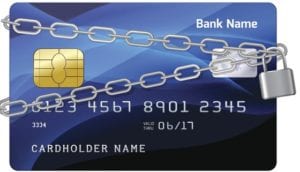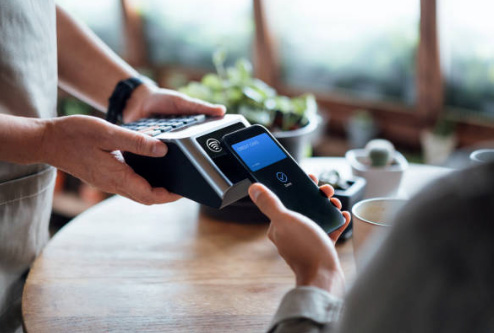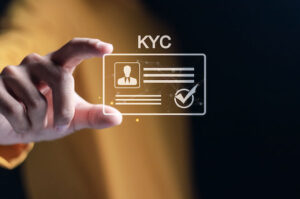With the rise of mobile technology, enterprises and institutions are rapidly creating mobile apps to enable consumers to conduct e-commerce transactions conveniently and efficiently. From digital payment processing, investing, and money transfers, billions of dollars are exchanged on these mobile-friendly platforms, creating an irresistible target for fraudsters. Understanding how bad actors exploit mobile payments can help safeguard customers’ and institutions’ sensitive data and financial accounts.
What is Mobile Payment Fraud?
At its core, mobile payment fraud refers to deceptive or unauthorized activities that exploit vulnerabilities within mobile payment systems, leading to financial losses and compromised personal information. As mobile transactions become increasingly prevalent, fraudsters employ various tactics to exploit security weaknesses, posing risks to users and service providers.
Types of Mobile Payments Fraud
Account Takeover Fraud
Account takeover (ATO) occurs when cybercriminals assume control of a legitimate user’s account with the intention of stealing account information or money. Whether a bank or an e-commerce account, any account can be at risk of account takeover. With ATO, there are countless ways for bad actors to disrupt an account. They can impersonate legitimate customers to open a new bank account or line of credit, place orders online, order takeout, and even redeem reward points. If they can leverage information to gain access to one account, chances are that information will allow them to break into several other accounts belonging to the same identity. Some common ways cyber thieves acquire ATO include phishing or credential stuffing.
Card-Not-Present (CNP) Fraud
CNP is one of the most common types of mobile payment fraud. There are two typical ways it can present itself. The first kind of CNP fraud occurs when a bad actor gains control of leaked or stolen credit card information and links it to their mobile device. From there, they can easily make online purchases or even walk into a store and utilize contactless, near field communication (NFC) to conduct a transaction. With contactless payments, cyber thieves don’t need to present a physical credit card or provide the number—it’s all part of their digital wallet. The other form of CNP fraud occurs when a lost or stolen mobile device is used to make purchases. Smartphones don’t need to be unlocked to conduct contactless transactions!
Chargeback Fraud
When a customer uses the digital wallet on their mobile device to make a purchase, they can still dispute the charge just like a traditional charge. Also known as “friendly fraud,” chargeback fraud occurs when legitimate orders are disputed and merchants need to refund their payment. Sometimes, it’s an accidental charge, while other times, it can be an intentional choice by fraudsters. For example, they may knowingly make the charge but claim the product was never delivered even though it was. By doing so, fraudsters get to keep the product and their money. It can be a big problem for banks because it can be very difficult to distinguish legitimate users from cyber thieves.
Loyalty Fraud
When an illegitimate user gains access to a customer’s loyalty account, it’s known as loyalty fraud. Today, most retailers provide customers with a mobile app to manage loyalty account profiles and information. Whether through phishing or a data breach, fraudsters can get control of loyalty accounts. Of course, there is also the chance of an internal leak by an employee. Once thieves have access, they can use the points for themselves or sell them to make money.
Preventing Mobile Payment Fraud
Follow PCI-DSS Compliance Standards
Payment card industry data security standard (PCI-DSS) compliance standards should be observed by any institution that handles or stores financial information. Organizations should thoroughly review PCI-DSS documentation to safeguard sensitive data. From encryption requirements to password policies to firewall installations, PCI-DSS regulations ensure enterprises are prepared to minimize the risk of unauthorized access to mobile payment accounts.
Educate Customers
Many customers are unaware of how their sensitive information can be compromised. For example, using public WI-FI to conduct mobile payment transactions puts customers at risk of cybertheft. When customers are educated, banks and organizations can avoid huge monetary losses.
Transaction Monitoring
Adopting a proactive approach can go a long way in safeguarding data. Financial institutions should follow Anti-Money Laundering (AML) and Know Your Customer best practices to avoid potential data breaches. Also, application security features should be engaged to help fingerprint mobile devices. When you can identify a device, organizations can monitor behavioral patterns with the help of enterprise analytics and machine learning.
Screen New Customer Applications
Fraudsters play the odds by creating multiple accounts since some may be identified as fraudulent. In some cases, cyberthieves work together in a coordinated attack. Banks and enterprises can work with cybersecurity professionals to implement tools to screen applications from new customers with a history of cybercrime or fabricating false applications. For example, they may use fake driver’s licenses or other forged documents.
If you’re interested in learning more about mobile payment fraud and how to implement the right controls, BankersHub offers a variety of educational courses on fraud to help keep you up to date on the latest information and solutions. As a leading provider of financial certification and training solutions, BankersHub crafts courses around the needs of banking professionals. From on-demand programs to certifications, there are several ways to expand your knowledge of the ever-changing landscape of today’s financial environment.








